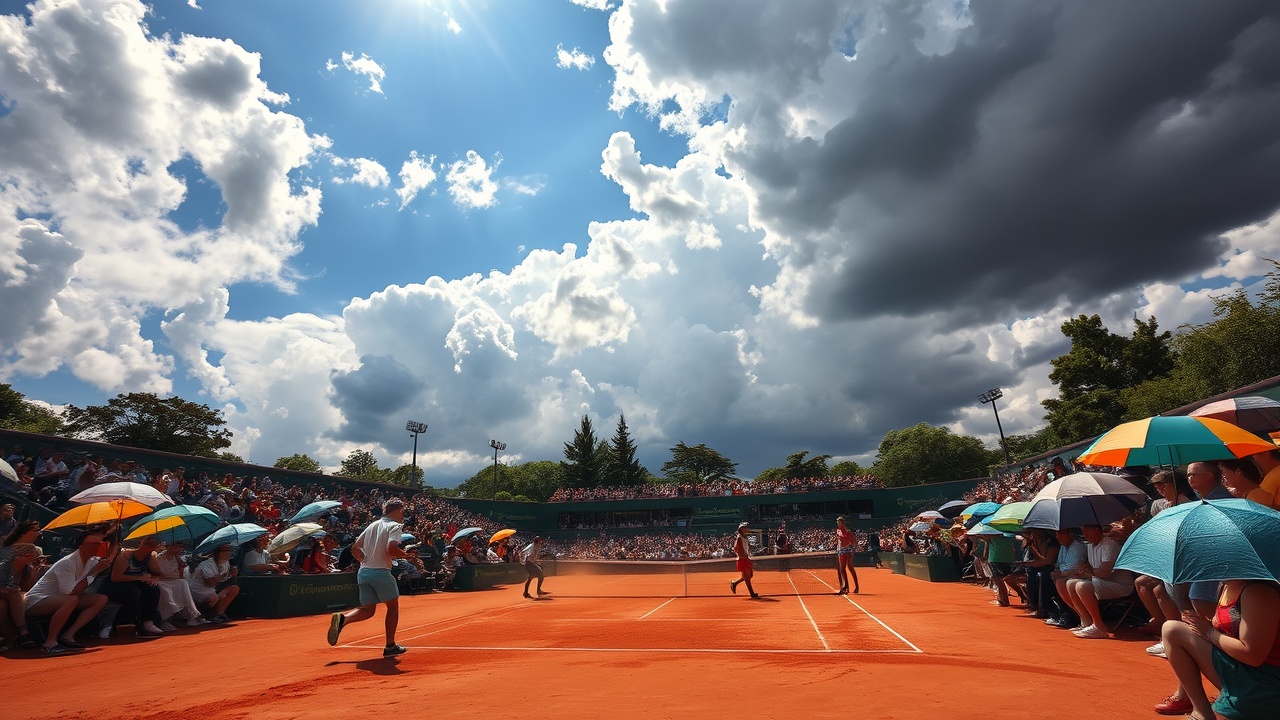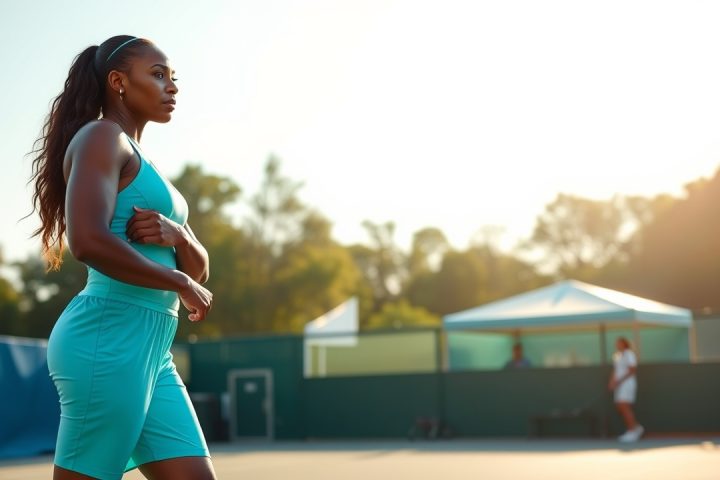The Changing Conditions of the French Open
PARIS – The French Open at Roland Garros has taken a vibrant turn as the weather in the city shifts from the damp and cool conditions of earlier days to the warm embrace of sunshine. On May 30, as temperatures climbed to a pleasant 86 degrees Fahrenheit (30 degrees Celsius), the clay courts transformed, creating a markedly different playing environment. Shots zipping through the air and powerful serves showcased the players’ adaptability as they embraced the change in conditions that often defines clay-court tennis.
Players’ Adaptation to Heat
World No. 1 Iga Świątek demonstrated the effectiveness of her spin-heavy game in the sweltering heat, easily defeating Jaqueline Cristian in straight sets, 6-2, 7-5. Following her match, she shared insights on how the warmer weather affected play, noting,
“The balls were dead faster,”
emphasizing the importance of topspin in controlling the ball’s trajectory.
“Even our serves were quicker than usual,”
she added, reflecting on the day’s high-energy atmosphere.
Carlos Alcaraz, another top contender, faced the heat later in the evening when he battled Damir Džumhur. He initially thrived in the warm conditions, seizing a two-set lead. However, as Džumhur found his rhythm in the third set, the temperature began to drop, contributing to a more challenging match for Alcaraz. Ultimately, he prevailed, winning 6-1, 6-3, 4-6, 6-4, but reflected on the match as less enjoyable than he had hoped.
The Historical Context
Historically, players have often struggled against the elements at Roland Garros, particularly when Rafael Nadal dominated the tournament, turning sunny days into a near-impossible challenge for his opponents with his formidable topspin. As Stan Wawrinka recalled in an interview, he felt apprehension leading into a final against Nadal when forecasters called for sunny skies just two years after Nadal’s impressive victory at dawn’s chilly start.
Clay courts, characterized by their unique composition of red brick dust layered atop limestone and stones, require players to continually adapt to ever-changing weather conditions. Unlike other surfaces, which can become unplayable with even light rainfall, clay can endure showers that make it more complex for players, allowing diverse playing styles to shine depending on the day’s weather.
The Impact of Weather on Performance
World No. 1 Aryna Sabalenka echoed this sentiment, describing her match against Olga Danilović as
“completely different”
from her earlier rounds due to elevated bounces and faster balls in the warmer climate. For players, checking weather forecasts becomes a daily ritual, as conditions can vary dramatically throughout the tournament. Alex de Minaur shared that he finds himself examining weather apps at night to prepare for practice and matches during the clay swing.
The tournament saw its fair share of unpredictable conditions leading up to the sunny respite, with players like Tommy Paul experiencing everything from rain to wind during their initial matches. Djokovic‘s own first-round experience against Mackenzie McDonald was punctuated by rain interruptions, which created a slick playing surface. As he advanced to his next match with much clearer skies, he acknowledged the inherent unpredictability of the weather at Roland Garros, stating,
“It can be very cold and very warm, which affects the ball bounce.”
Personal Preferences and Tactics
In conversations about preferences and play styles, many players have their likes or dislikes regarding the varying weather of clay surfaces. As Alexander Zverev noted, the difference in performance between sunny and cold conditions can significantly impact results. Similarly, Madison Keys recalled an experience from the rain-soaked 2016 tournament, when she felt overwhelmed by the heavy conditions on court, which made it challenging to compete against top clay-court players.
Many athletes, including rising stars like Ben Shelton and Stefanos Tsitsipas, emphasize the distinctness of various clay tournaments. With significant variations in court conditions—such as those seen between the Madrid Open and the Italian Open—each event feels unique based on its own environmental influences.
As players navigate through these diverse conditions, they often adjust racket string tension, adapting to heat or cold—tightening strings in sunny warmth for more control, or loosening them in chilly air for greater ball speed. For Iga Świątek and others, this fluidity is crucial, as they continue trying to master the ever-changing dance between performance and the elements.
Conclusion
In a sport defined by change and adaptability, clay courts at Roland Garros serve as a testament to nature’s unpredictability, while also underscoring the relentless determination and skill of the athletes who compete on them. As the tournament progresses into its second week, players will undoubtedly continue to monitor the weather closely, each hoping to harness the elements to their advantage.




